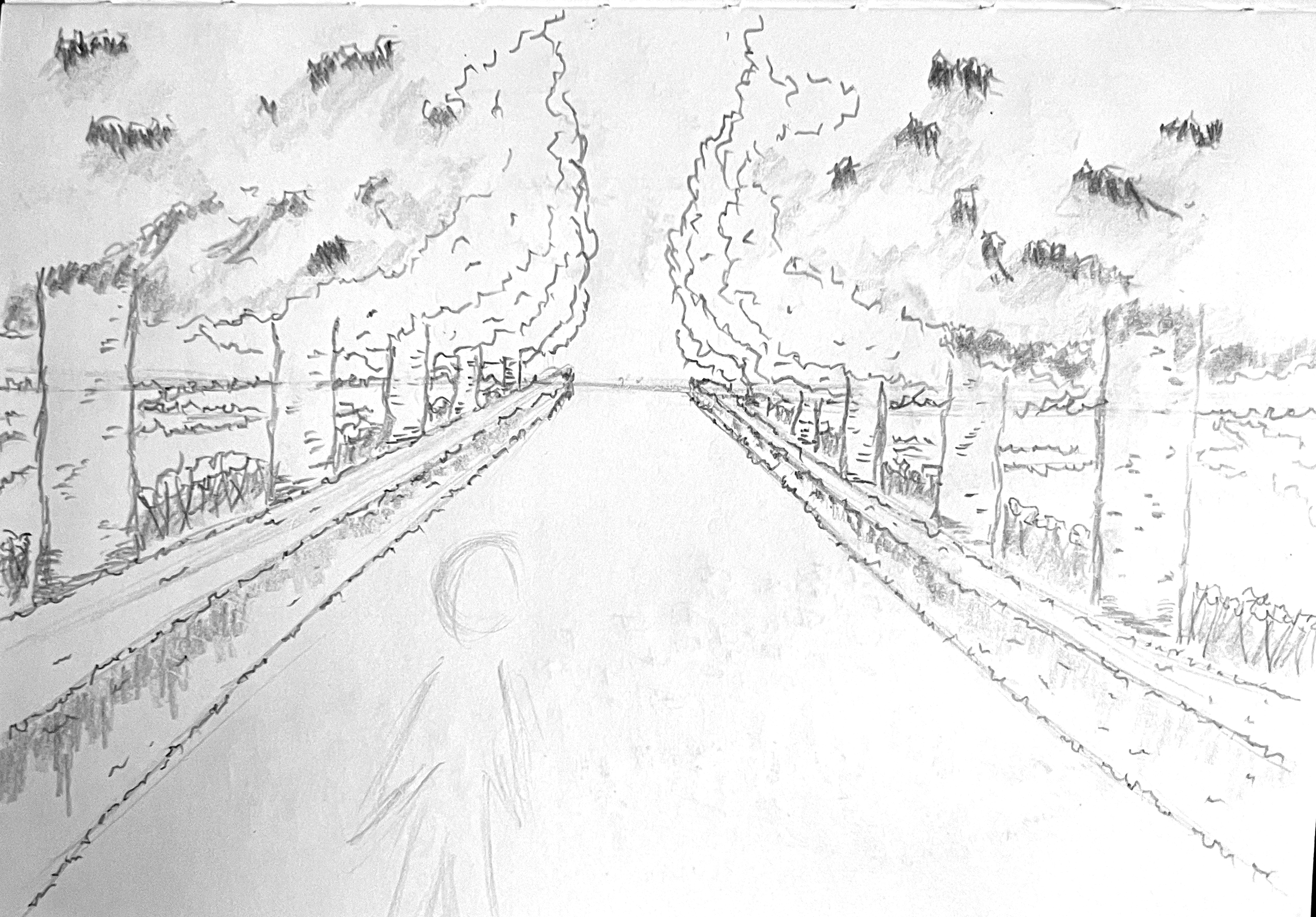
Wakening Waves
Course: Planting, Construction & Representation
Institution: Wageningen University & Research
Scale: Park section
Date: Oktober 2025
Wakening Waves showcases the knowledge gained about planting design and plant species through the design of a section of a park. Developed as part of the course Planting, Construction, and Representation, this project focuses on understanding how plants, form, and symbolism can shape spatial experience.
Through this exercise, I explored not only plant composition and visual rhythm, but also how botanical diversity can express conceptual ideas about human consciousness and ecological balance.
CONCEPT & REFLECTION
During the course Planting, Construction, and Representation, I began to notice strong parallels between plants and people. Just like humans, plants are shaped by their environment — by light, wind, water, and soil, as well as the presence of other species around them. Their growth and form depend on these relationships.
This observation led me to think about how environments influence development. Every plant has certain innate characteristics, just as every person does, but whether these traits can flourish depends on the surrounding conditions. Knowing what a plant or a person needs to thrive becomes a starting point for design.
In planting, this translates into the composition of groups, how different species complement each other through form, structure, color, and seasonal rhythm. A healthy planting scheme, like a healthy community, is based on diversity and mutual support. Where monocultures exhaust the soil and become vulnerable, mixed systems build resilience and vitality.
These ecological insights mirror broader societal trends: a growing awareness of circularity, diversity, and interdependence. As a spatial planner, I learned to zoom in and out across scales — from policy to place. In this landscape architecture course, I applied the same thinking to living systems, designing environments where ecological principles and human experience meet.
From this reflection, the concept of Wakening Waves started. A planting design that tells a story about growth, awareness, and connection through the language of plants.
DESIGN TRANSLATION
Trees & bushes
The general greenery has an important function in the park, namely framing. In addition, it has a different function in both areas, the organic and romantic part, and in the sleek modern part of the park. The organic and romantic part will be a place where visitors can escape. It is located in a “world” where it is not immediately clear how the park fits together.
This effect is enhanced by the high hedges, which are 200 cm high. These are decorated with border plants and occasionally a multi-stemmed currant tree on the other side of the hedge. This suggests that there is more behind the hedge. Using Kaplan & Kaplan's theory, we apply 1. the immediate scene: what we can immediately see from the current field of view and 2. the derived scene: what we would probably see if we were to explore further.
By increasing the complexity in this area of the park, we ensure that people become curious about the different spaces in this area. In addition, these spaces also serve as meeting places for groups of people.
In contrast to the general greenery in the sleek and modern part, we see that the tall summer oaks and the lower Japanese holly provide a large and open field of vision. This allows visitors to see the extensive flower meadow that will cover slightly less than half of the park. If you want to enter the flower meadow, you can follow the woven hedges. These 25 cm high woven hedges make the flowers appear to reach higher. In addition, crescent-shaped inlets have been created so that you can literally stand among the flowers. This allows you to view the flowers from both far away and up close.
DESIGN TRANSLATION
Meadows & border planting
By framing the flowers and border plants in two different ways, they also take on a different function in both areas.
The border plants in the romantic section will offer complexity and mystery. They do this through their diversity and layering. These plants have not been selected for their symbolic value, but rather to add allure and beauty.
The meadow flowers, on the other hand, have been given a strong symbolic value. The area lends itself to this, thanks to the large open space that provides a clear image, both literally and figuratively. The flowers are repeated in round organic “waves” that contrast with the linear and strict walking routes. Each wave, seen from the centre, will consist of four main flowers. The four flowers in Wakening Waves thus follow the human cycle of awakening.
The opium poppy (Papaver somniferum) represents the dreaming state, the unconscious human being, resting in the illusion of certainty. The cuckoo flower (Silene noctiflora) marks the night-time awakening, the moment when consciousness begins to stir. The bearded iris (Iris germanica) stands for hope and transition, openness to change. Finally, the bellflower (Campanula) rings out like a call to connection: a community that resonates in collective consciousness.
Together, these flowers show how diversity brings strength. In nature, variation between species ensures a resilient ecosystem; in humans, that same diversity translates into growth, understanding and cooperation. Awakening Waves reflects that natural balance: not one dominant voice, but an interplay of many tones that together form a single vibration.
FULL DOCUMENT
Wakening Waves showcases the knowledge gained about planting design and plant species through the design of a section of a park. Developed as part of the course Planting, Construction, and Representation, this project focuses on understanding how plants, form, and symbolism can shape spatial experience.









